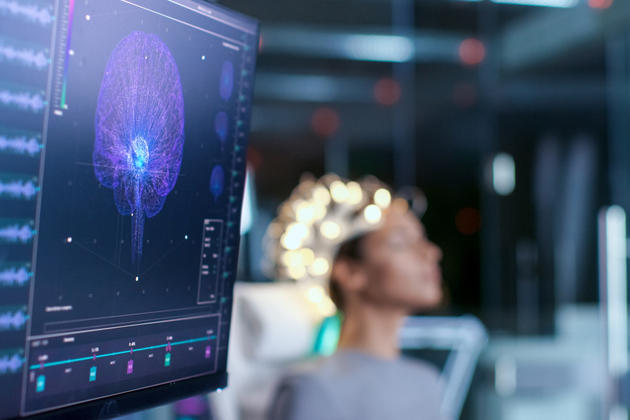Sleep Laboratory
Disruption of sleep for different reasons can cause complaints and various health problems both during the day and at night. Many symptoms of sleep disorders, such as snoring, breathing difficulties, and inability to sleep, are considered “normal” in society. Sleep disorders are very important in terms of both individual and social outcome points. Therefore, these disorders should not be neglected.

What kind of service is provided at Anadolu Health Center Sleep Laboratory?
The person who is suspected of having sleeping disorders based on his complaints spends one night in the Sleep Laboratory. However, this place looks more like a comfortable hotel room than a laboratory. Because it is of great importance for the person to fall asleep feeling comfortable. At least 6 hours of sleep are recorded in the laboratory. Before starting the sleep examination, the patient is prepared for the shooting, a process that takes approximately 40 minutes. For this purpose, electrodes are placed on the patient’s head to record brain waves, devices attached to the nose to record breathing and snoring, heart electrodes to monitor heart rate, and leg and chin electrodes to monitor muscle activation. Respiratory movements are monitored with special belts attached to the chest and abdomen, and blood oxygen levels and pulse are monitored with a small device attached to the finger. The patient’s sleep is recorded with all these parameters under video monitoring. All electrodes and tapes installed do not hinder any movement of the patients.
It is recommended that patients spend some time in the polysomnography room before the shooting to get used to this environment and devices. When the patient becomes sleepy, the polysomnography technician turns off the light and instantly monitors the sleep records transferred to the computer from a separate room. He is with the patient when necessary or when the patient presses the call button. Throughout the night, the patient’s respiratory events, leg and jaw EMG, heart rhythm, blood oxygen level and pulse, eye movements, abdominal and chest exertion, whether there is snoring, sleep stages, and the position in which he lies are recorded simultaneously with the camera. The patient can continue his daily life the next day.
What kind of service is provided at Anadolu Health Center Sleep Laboratory?
The person who is suspected of having sleeping disorders based on his complaints spends one night in the Sleep Laboratory. However, this place looks more like a comfortable hotel room than a laboratory. Because it is of great importance for the person to fall asleep feeling comfortable. At least 6 hours of sleep are recorded in the laboratory. Before starting the sleep examination, the patient is prepared for the shooting, a process that takes approximately 40 minutes. For this purpose, electrodes are placed on the patient’s head to record brain waves, devices attached to the nose to record breathing and snoring, heart electrodes to monitor heart rate, and leg and chin electrodes to monitor muscle activation. Respiratory movements are monitored with special belts attached to the chest and abdomen, and blood oxygen levels and pulse are monitored with a small device attached to the finger. The patient’s sleep is recorded with all these parameters under video monitoring. All electrodes and tapes installed do not hinder any movement of the patients.
It is recommended that patients spend some time in the polysomnography room before the shooting to get used to this environment and devices. When the patient becomes sleepy, the polysomnography technician turns off the light and instantly monitors the sleep records transferred to the computer from a separate room. He is with the patient when necessary or when the patient presses the call button. Throughout the night, the patient’s respiratory events, leg and jaw EMG, heart rhythm, blood oxygen level and pulse, eye movements, abdominal and chest exertion, whether there is snoring, sleep stages, and the position in which he lies are recorded simultaneously with the camera. The patient can continue his daily life the next day.



